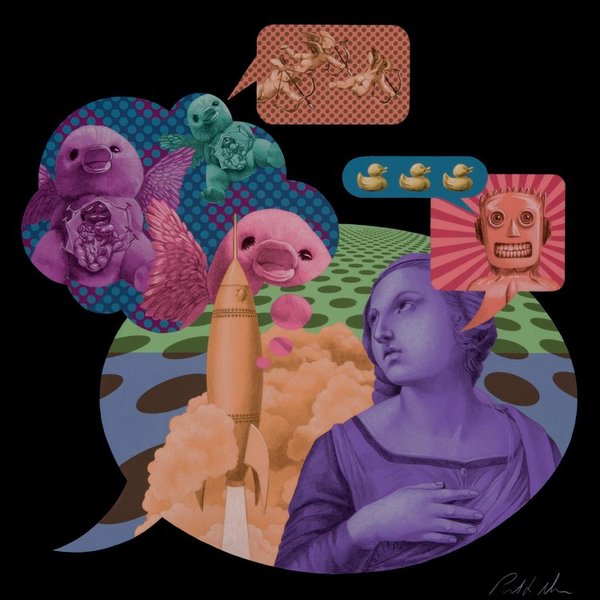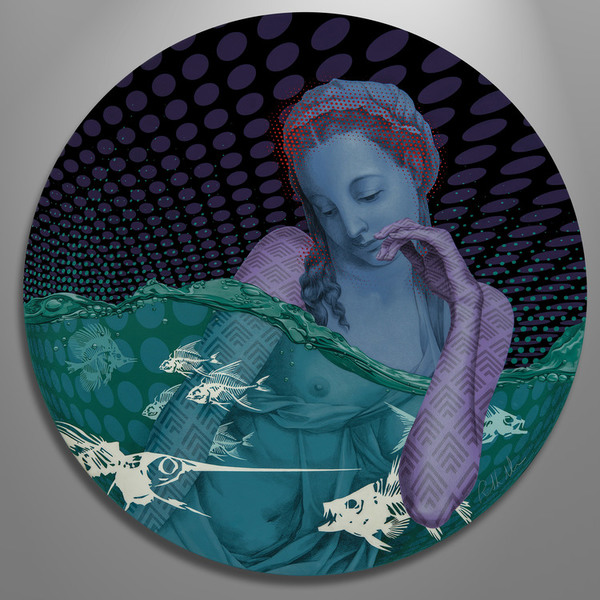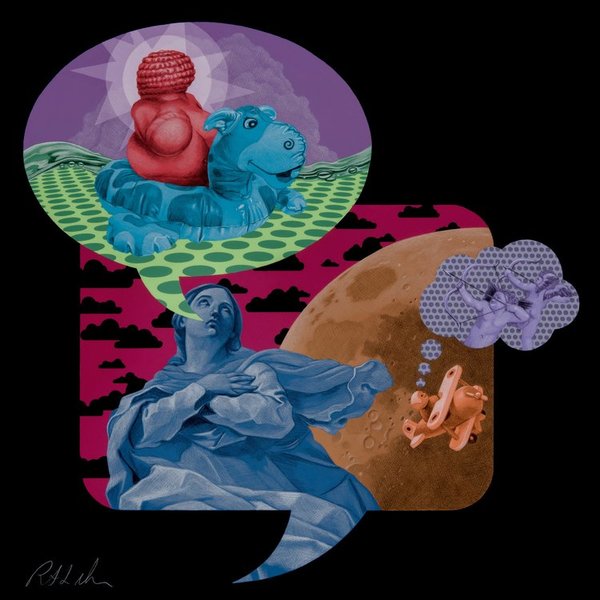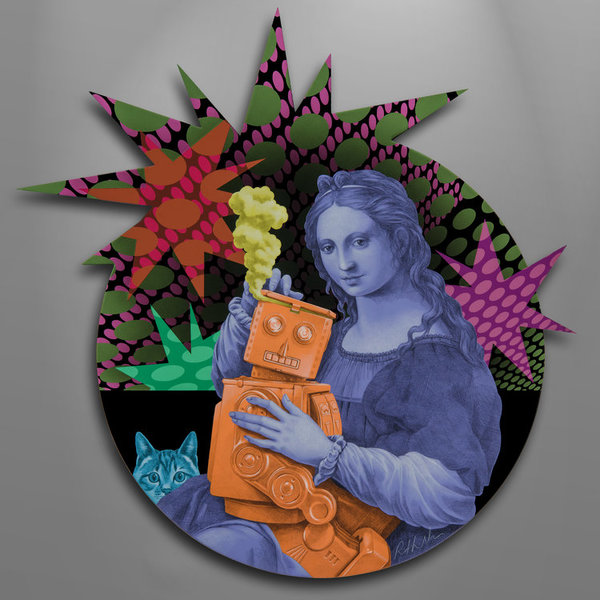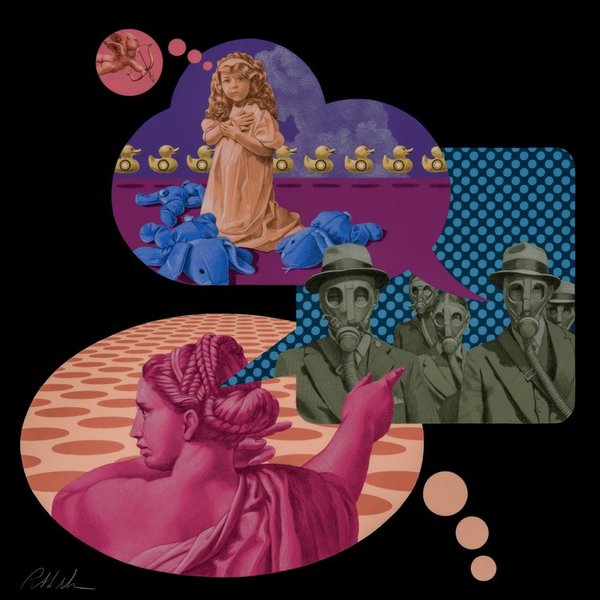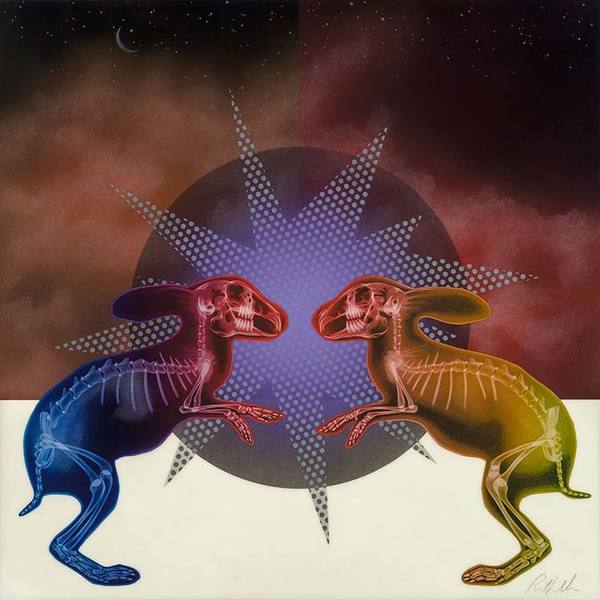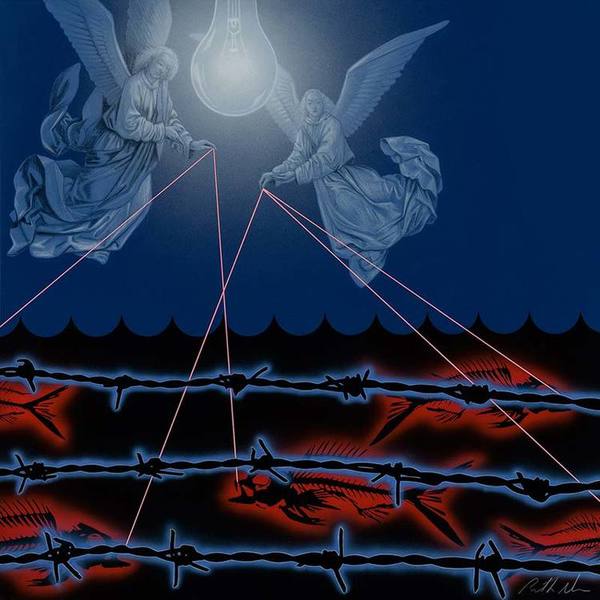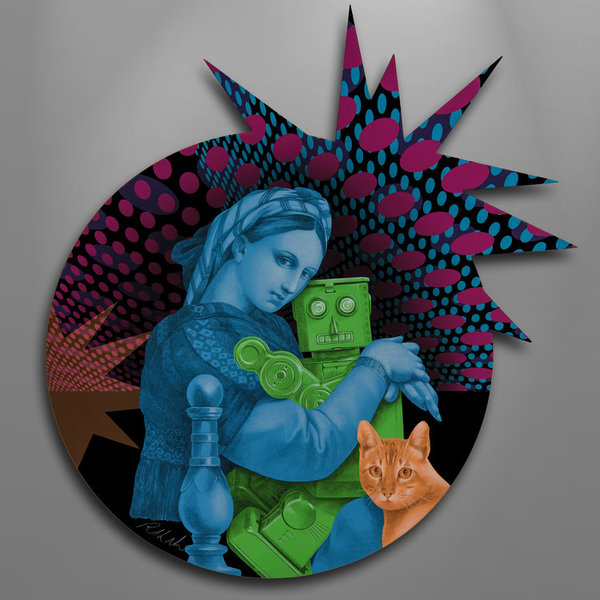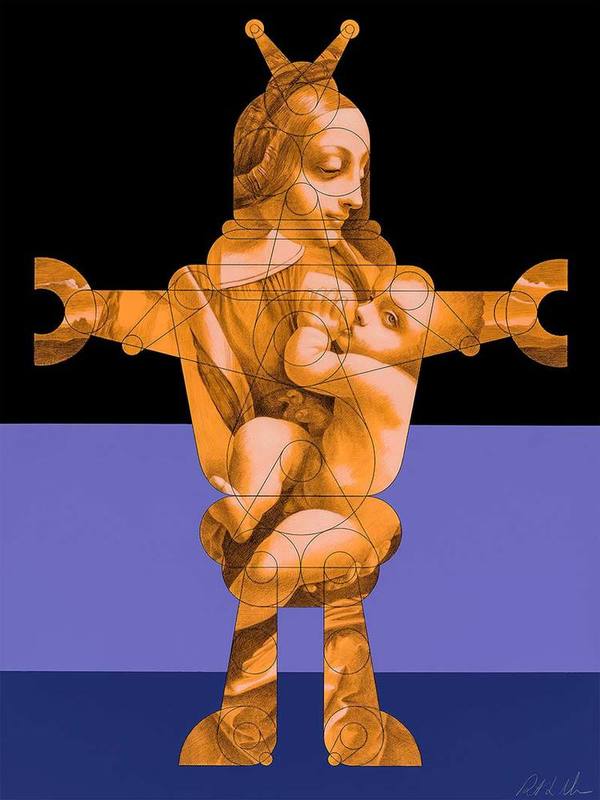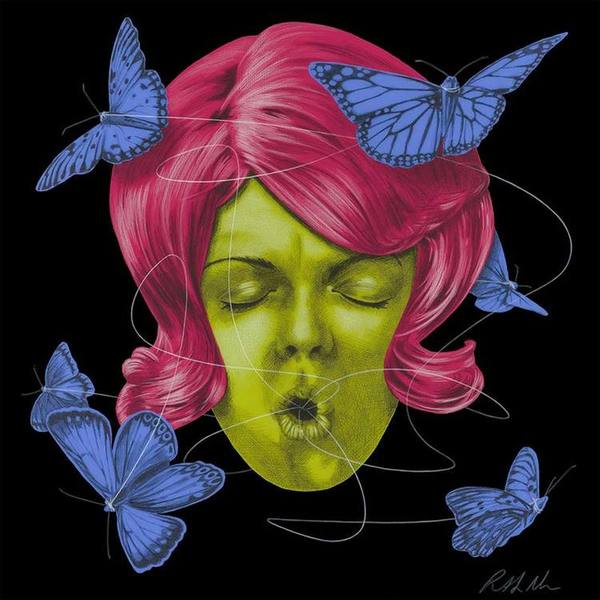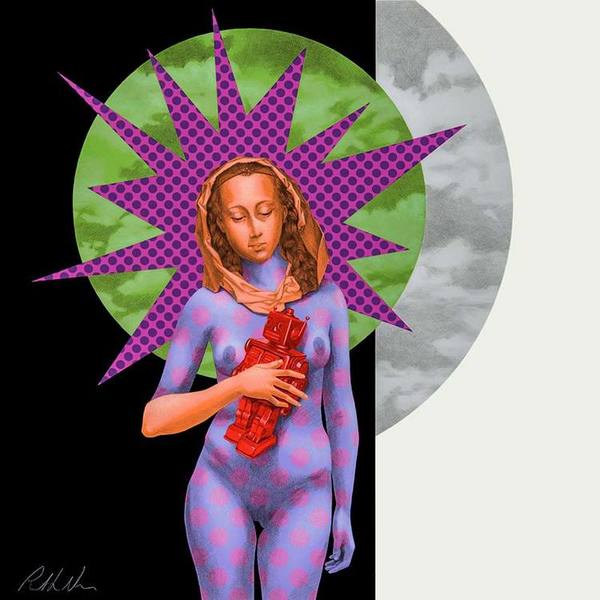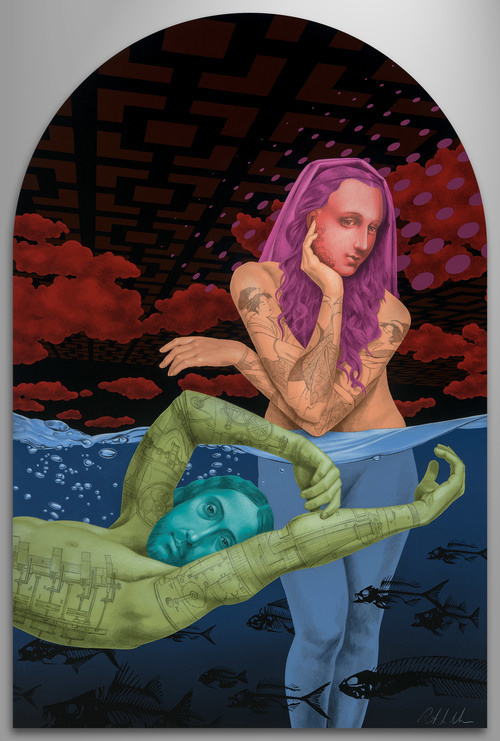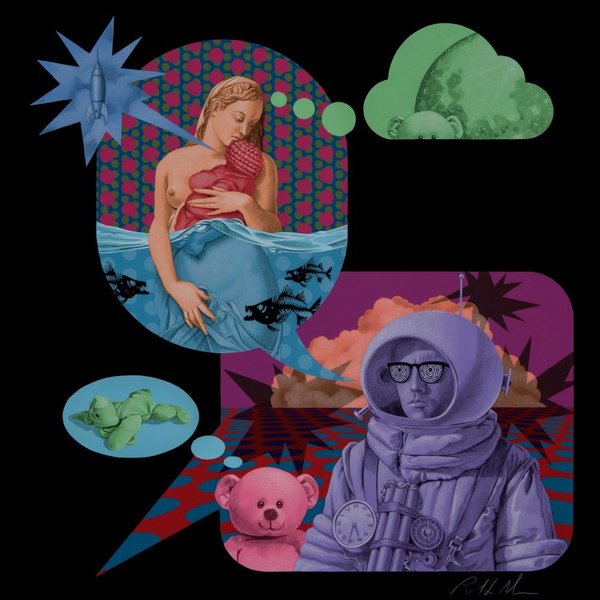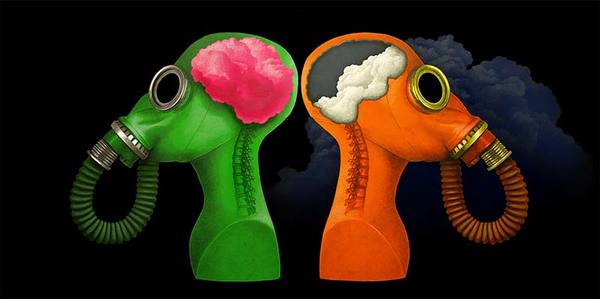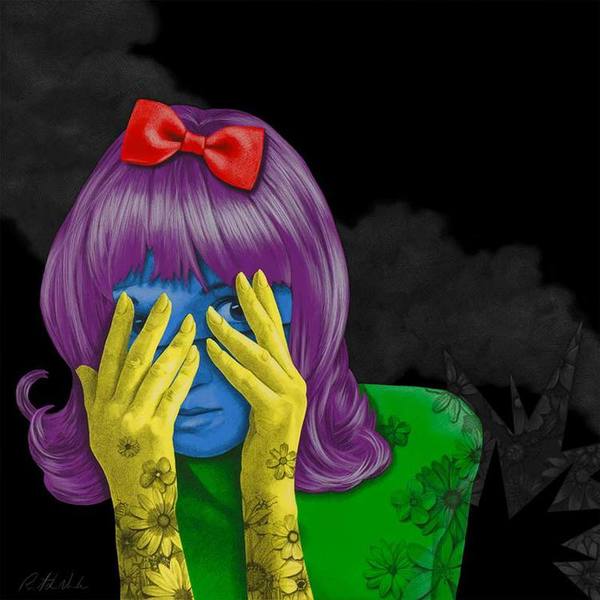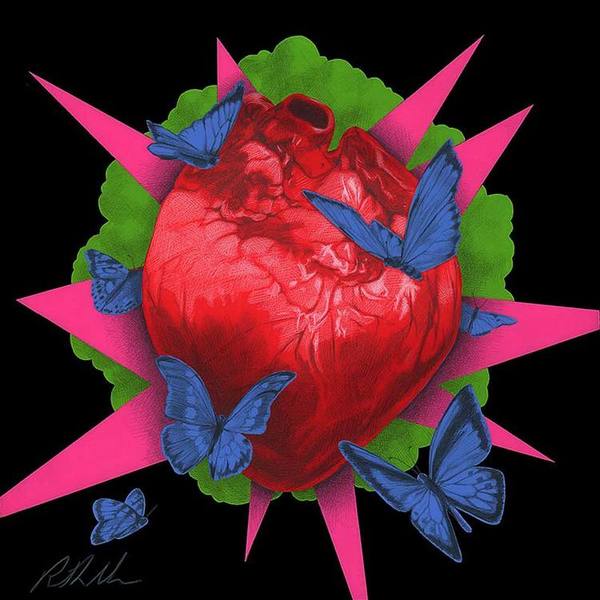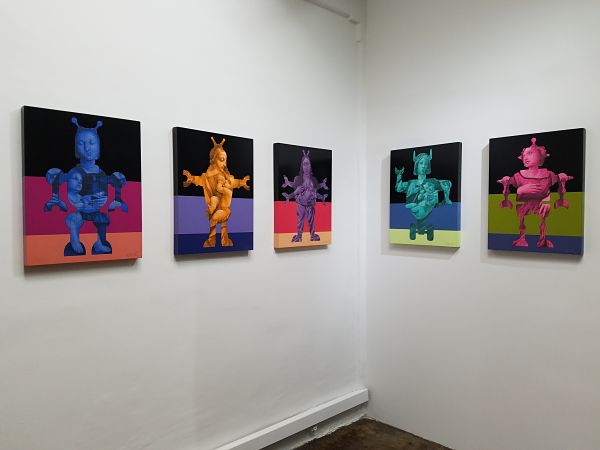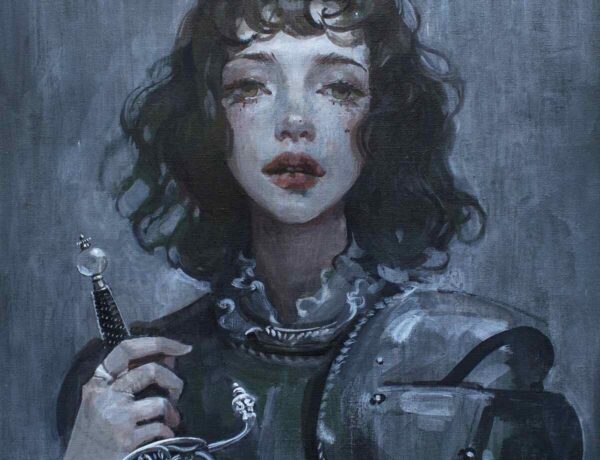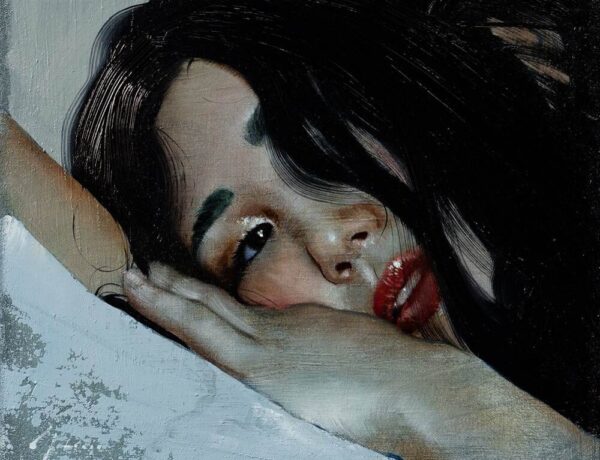 “Doublethink means the power of holding two contradictory beliefs in one’s mind simultaneously, and accepting both of them.” -George Orwell, 1984
“Doublethink means the power of holding two contradictory beliefs in one’s mind simultaneously, and accepting both of them.” -George Orwell, 1984
First whip up some twinkly pop music (Madonna), then fold it into a batter of hardcore punk (Dead Kennedys) and you have the musical equivalent of Robert Nelson’s juxtaposed, refreshingly unique, curveball paintings. Cold bones against warm skin, stuffed animals being dissected, and robots cradled by soft, feminine bodies – it’s pretty obvious that graphic designer turned painter Robert Nelson is interested in contrast. “Innocence/corruption, the infinite/the finite, past/future, good/evil. It’s fascinating,” Nelson says, “how meanings can change depending on point of view.”
The world we perceive exists through filters, and some filters are more “honest” than others. Consider the simple act of viewing a photograph two different ways. First, when viewed with the naked eye, pictures are made up of blocks of color which represent distinct, recognizable images we assemble effortlessly into our preexisting mental schematics – a face, a skeleton, a cat – “comfortable” things that we have seen on many prior (and perhaps mundane) occasions.
Next, place that same photograph under a microscope and watch it transform, quite splendidly, into blips of repeated color, primarily dots and circles that seem impossibly simplistic and organized, like rows of round, green cabbage heads peeking proudly out of a farmer’s soil. When we are caught up in the midst of any heightened emotional event, whether it be ecstasy or trauma, we no longer see the big picture. Our perceptual systems are magnified – wide open – we are engulfed.
With his placement of classical portraiture alongside pop imagery, Nelson is quite able to wield his trusty paintbrush like a wizard’s wand and time travel hundreds of years back and forward simultaneously. And by interjecting childish and/or humorous elements – such as rubber duckies, toy robots, and inflatables – into his work, and by using bold, outlandish colors, Nelson makes sobering content easier to swallow. It’s a bit like asking your cheerful friend with the delightful Irish accent to deliver your awfully bad news. Or like using a spoonful of sugar to help the medicine go down. Nelson gives us expertly rendered content in a way that’s approachable and intriguing without taking himself or the subject matter too seriously.
Nelson begins his work with an acrylic under-painting creating all the color of the finished piece. On top of the under-painting is a drawing consisting of multiple layers of graphite and white pencil. For not only does he succeed at the portrayal of conceptual time travel, but he also is astonishingly adept at employing content and composition to deliver the continuum of the human condition. By placing warmth, radiance, flowing hair, and florals alongside icy X-rays, absence, snowflakes, and smooth bones, Nelson captures the essence of humanity in a straightforward, elegant, and unexpected context – something that isn’t easy to do.
Many of Robert Nelson’s motifs, shapes, and patterns are reminiscent of comic book-style illustrations, and one may notice a special resemblance to the classic 1960’s live-action Batman TV series in which blue-caped Adam West’s punches, kicks, and blows (“POW!”, “CRASH!”, “ZONK!”, etc.) were highlighted with sound effects superimposed in bright colors over the action on the screen. These “impact words” were often showcased in brightly colored, zig-zagged thought bubbles – which Nelson often places (minus the text) among or behind featured images in his work, giving them added impact.
Self-questioning, and the digestion of narrative, is to be expected when viewing Robert Nelson’s work. “I strive for images that are defined differently by each observer,” the artist says. Shapes, colors, fears, turn-ons – they are all products of our environment, our culture, and of course, our upbringings. All of which form our overall worldview. The viewers’ best practice here is to accept that it is indeed possible to be both alive and dead, funny and disturbing, retro and modern – all simultaneously. With this work, we shift perspectives, befriend ambiguity, and let the work speak to us through our own unique personal filters. We are all individuals, and along this interpretive, human continuum, there are no wrong answers.
Robert recently had a solo show titled “Dialogs With the Future” at Brainworks Gallery in Los Angeles, and currently has work in a group show at the Annenberg Community Beach House in Santa Monica. The latter, which is called “Personal Narrative,” runs through June 4, 2017.


